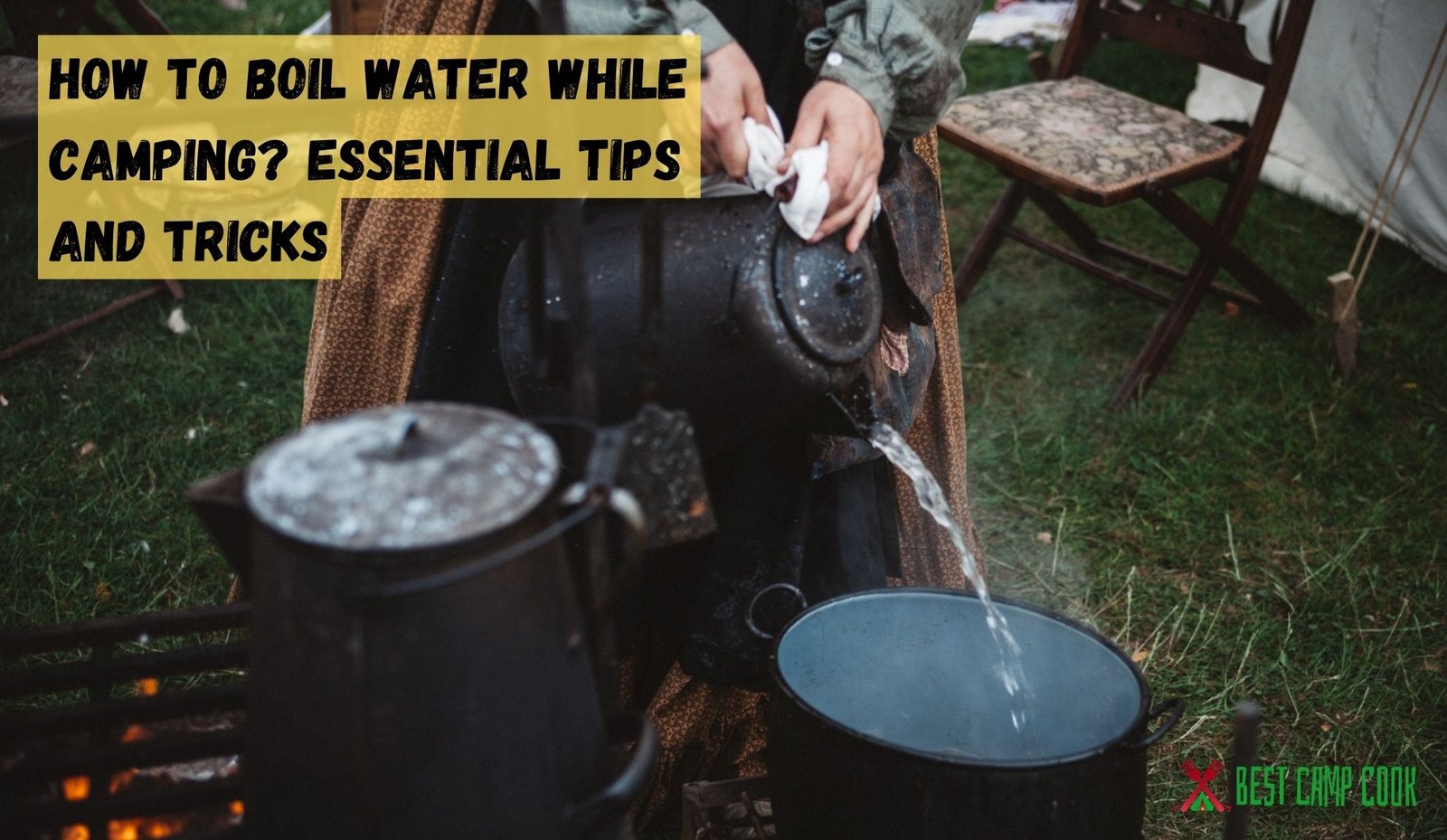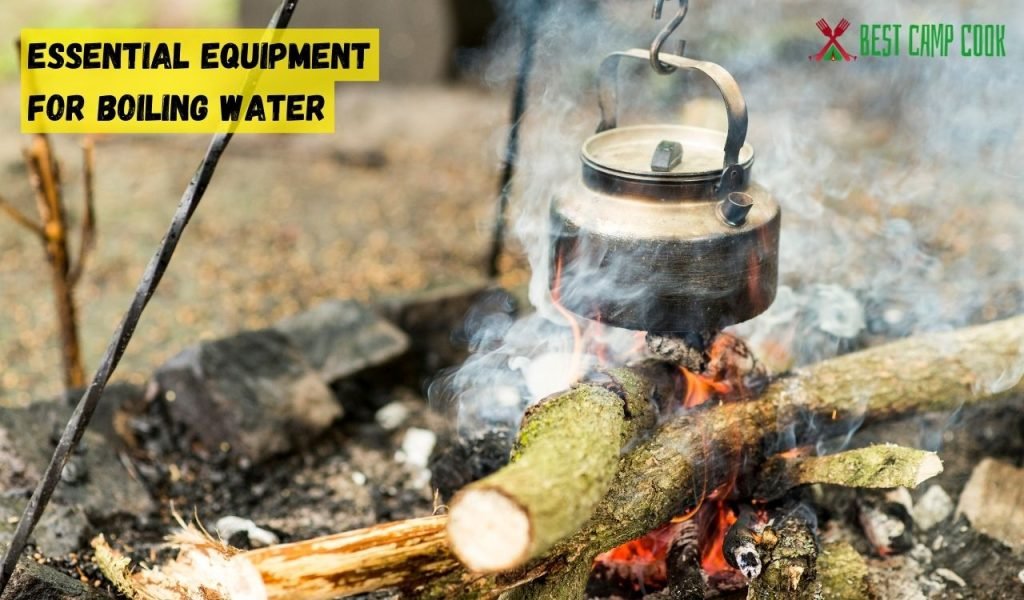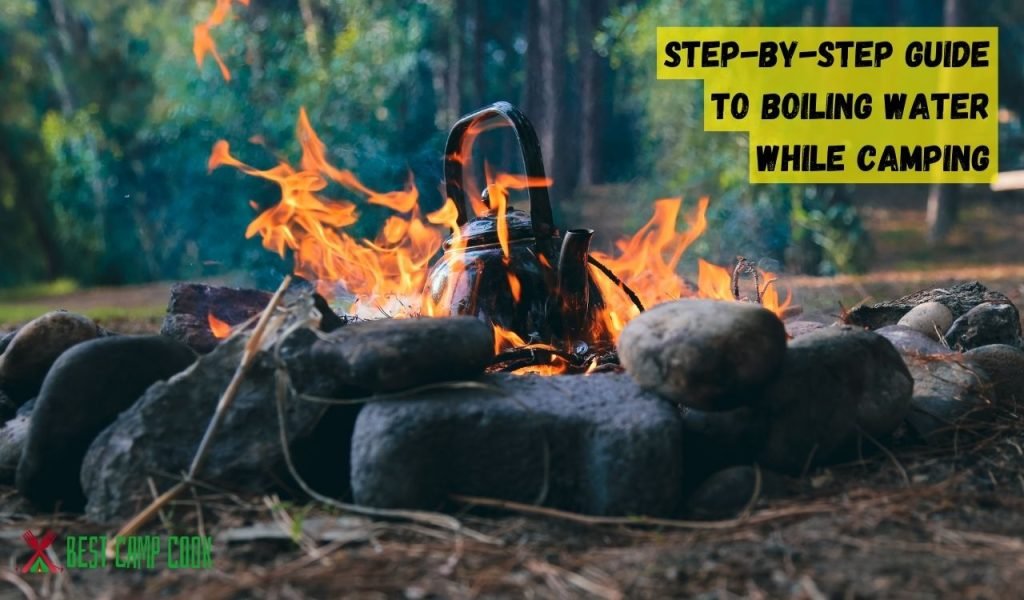Physical Address
304 North Cardinal St.
Dorchester Center, MA 02124
Physical Address
304 North Cardinal St.
Dorchester Center, MA 02124

Looking to learn how to boil water while camping? Look no further! In this short and snappy guide, we’ll uncover the secrets of boiling water while camping. Whether you’re a seasoned adventurer or a camping novice, knowing how to boil water is an essential skill for a successful outdoor experience. Imagine starting your day with a hot cup of coffee or preparing a hearty meal in the wilderness.
With our expert advice and insider tips, you’ll become a campfire cooking pro in no time. So, grab your camping gear and get ready to discover the art of boiling water while camping. Let’s dive right in and make your camping meals unforgettable!
Main Summary: How to Boil Water While Camping
Mastering how to boil water while camping efficiently. Choose a portable stove or campfire setup. Place clean water in a pot, suspend over heat source, wait for bubbles. Ideal for instant meals, hot drinks, and rehydrating food. Elevate your outdoor culinary adventures!
Camping is a wonderful way to connect with nature and enjoy the great outdoors. Whether you’re embarking on a solo adventure or camping with friends and family, having access to clean, boiled water is essential for hydration, cooking, and maintaining good hygiene.
In this guide, we will explore the step-by-step process of boiling water while camping, along with important safety measures and hygiene practices to ensure a safe and enjoyable experience.

Boiling water serves two critical purposes while camping: ensuring safe drinking water and facilitating cooking and meal preparation. Let’s explore these aspects further:
In the great outdoors, access to clean and safe drinking water is not always guaranteed. By boiling water, you eliminate harmful bacteria, parasites, and other contaminants that can cause waterborne illnesses. Whether you’re using water from a natural source or relying on campground taps, boiling is an effective method to ensure your hydration needs are met safely.
Boiling water is a fundamental step in many camping recipes, including making delicious camp stew. From rehydrating dehydrated meals to brewing hot beverages, boiling water opens up a world of culinary possibilities during your outdoor adventures. Whether you’re preparing soups, pasta, or hot drinks, having the ability to boil water quickly and efficiently is essential for a satisfying outdoor dining experience.
And when it comes to camp stew, boiling water is the first step towards creating a hearty and flavorful meal that will warm you up on chilly nights and fuel you for your outdoor activities. So, grab your pot, fill it with water, and let it come to a rolling boil as you gather the ingredients for your camp stew.

To successfully boil water while camping, you need the right equipment. Here are some essential items to include in your camping gear:
A reliable camp stove is the heart of your outdoor kitchen. Choose a stove that suits your camping style, whether it’s a compact backpacking stove or a larger propane-powered option. Ensure your stove has a sturdy and stable design to prevent accidents and spills during the boiling process.
Invest in a durable and lightweight pot or kettle specifically designed for camping. Look for one with a heat-resistant handle and a tight-fitting lid to optimize heat retention and efficiency. Stainless steel or titanium cookware are popular choices due to their durability and heat distribution properties. Once you have chosen the right camping cookware, it’s important to clean it properly to maintain its quality and longevity.
If you prefer the traditional method of boiling water over an open fire, pack reliable fire starters to ignite your campfire quickly. Waterproof matches, lighters, or fire starters made from natural materials like lint and wax are handy tools to have in your camping kit.
When building a campfire, gather dry wood and kindling to provide a sufficient heat source for boiling water. Hardwoods such as oak or maple burn longer and produce more heat, making them ideal for boiling water. Ensure you follow campfire safety guidelines and check for any fire restrictions in your camping area.

When you’re out camping, having a reliable source of clean and safe drinking water is essential. Boiling water is one of the most effective methods to purify it and kill any harmful bacteria or parasites. Follow this step-by-step guide to ensure you can boil water efficiently and safely during your camping trips:
Before you start boiling water, make sure you have the right equipment readily available. Here’s what you’ll need:
Select a safe and level area for your heat source. If using a campfire, clear away any flammable materials and create a designated fire pit. If using a camping stove or burner, ensure it is set up on a stable surface away from any potential hazards.
Pour the collected water into your pot or kettle, leaving some space at the top to prevent boiling over. If the water is cloudy or contains visible particles, you can filter it through a cloth or use a portable water filter before heating.
Light your matches or lighter and carefully ignite your heat source according to the manufacturer’s instructions. If using a campfire, build it up gradually and ensure it is well-established before placing your pot or kettle on top. If using a camping stove or burner, follow the specific lighting procedure provided.
Place your pot or kettle filled with water on top of the heat source. If using a campfire, position it over the flames, ensuring stability. If using a camping stove or burner, place it on the designated burner area. Adjust the heat or flame intensity to achieve a rolling boil.
Keep a close eye on the water as it heats up. Once it reaches a rolling boil, you can reduce the heat slightly to maintain a steady boil. Boiling water for at least one minute is generally sufficient to kill most microorganisms and make it safe for consumption. In high-altitude locations, where water boils at lower temperatures, it is recommended to boil it for longer (3-5 minutes) to ensure proper sterilization.
Once the water has boiled for the required time, carefully remove the pot or kettle from the heat source using oven mitts or heat-resistant gloves. Set it aside on a heat-safe surface and allow it to cool before using or transferring the water to a clean container.
Remember, boiling water only purifies it; it does not remove chemical contaminants. If you suspect the water may be contaminated with chemicals, consider using alternative purification methods or bringing along a suitable water treatment system.

Boiling water efficiently while camping can save you time and fuel, allowing you to enjoy your outdoor experience to the fullest. Here are some expert tips to help you optimize your water boiling process:
Covering your pot or kettle with a lid traps heat and accelerates the boiling process. It also helps conserve fuel by reducing heat loss.
If you’re using a camping stove or burner, consider using a windscreen to shield the flame from wind. Wind can cause heat loss and slow down the boiling time.
If you anticipate water with significant sediment or particles, pre-filter it using a cloth or a portable water filter. This helps prevent clogging of your pot’s spout and ensures a cleaner boiling process.
When choosing a pot or kettle, opt for thin-walled options as they heat up more quickly and efficiently. Lightweight aluminum or titanium pots are popular choices among campers.
If using a camping stove, consider using a heat exchanger accessory. Heat exchangers improve fuel efficiency by maximizing heat transfer to the pot, reducing cooking time.
Knowing how much water you’ll need in advance helps minimize boiling time and fuel consumption. Measure and heat only the amount of water necessary for your cooking, drinking, or cleaning needs.
Boiling water while camping not only helps purify it but also ensures the safety and well-being of everyone involved. Here are some important safety measures and hygiene practices to follow:
When camping, it’s crucial to choose a safe water source to prevent waterborne illnesses. Avoid using water from stagnant ponds, heavily polluted rivers, or areas with potential contamination. Instead, opt for tap water from designated camping areas or collect water from natural sources such as flowing streams, ensuring they are free from visible signs of pollution.
Before boiling water, make sure your pot, kettle, and other utensils are clean and free from dirt, debris, or residue. Wash them thoroughly with hot, soapy water, and rinse them well. This helps prevent any potential contaminants from affecting the quality and safety of the boiled water.
After boiling water, it’s important to store it properly to maintain its safety and quality. Follow these guidelines:
Store boiled water in clean, food-grade containers that have been washed and rinsed thoroughly. Avoid using containers that previously held non-food items, as they may introduce unwanted substances into the water.
Cover the containers tightly with lids or caps to prevent contamination. This also helps preserve the boiled water’s temperature and prevents the entry of any foreign particles.
Store the containers in a cool, shaded area to prevent bacterial growth. Avoid exposing the containers to direct sunlight, which can affect water quality and potentially lead to the growth of harmful microorganisms.
Keep track of the storage time of boiled water and discard any water that has been stored for an extended period or shows signs of contamination or degradation. It’s generally recommended to consume or replace stored boiled water within 24 hours to ensure its freshness and safety.
The fastest way to boil water while camping is by using a camping stove with a high heat output. Look for a stove that has a powerful burner, allowing for quick heating. Additionally, using a pot or kettle with a wide base can help distribute heat more efficiently and speed up the boiling process.
When camping, it’s recommended to boil water for at least one minute to ensure it is safe to drink. Boiling water for this duration kills most pathogens and helps reduce the risk of waterborne illnesses. However, if you are camping at high altitudes (above 6,562 feet or 2,000 meters), it’s advisable to boil water for three minutes due to the lower boiling point at higher elevations.
To boil water in a survival situation, you need a heat source, a heat-resistant container, and water from a trustworthy source. Find a campfire or portable stove for heat. Collect water from a stream or lake, and place it in a metal pot or canteen.
Position the container over the heat source, allowing the water to come to a rolling boil. Maintain the boil for at least one minute to kill bacteria and pathogens, ensuring safe drinking water.
When camping, there are various methods to purify water. Boiling is a common method—bring water to a rolling boil for at least one minute (or three minutes at high altitudes). Water purification tablets can also be used according to instructions.
Portable water filters designed for camping are another option, removing impurities and bacteria. Some filters include UV sterilization. Follow the chosen method’s instructions carefully to ensure proper purification and safe drinking water.
To heat water naturally, you can use solar energy by placing a container of water in direct sunlight. The sun’s rays will gradually warm up the water over time. Another option is to utilize heat sources found in nature, such as hot springs or geothermal areas.
Submerging a container in hot spring water will naturally heat it up. Additionally, you can use the heat from a campfire by positioning a heat-resistant container near the flames, allowing the fire’s heat to warm the water.
Boiling water is an effective method to remove chlorine. To ensure chlorine removal, bring the water to a rolling boil and maintain the boil for a few minutes. This process helps to evaporate the chlorine, making the water safe to drink. Keep in mind that the exact time required may vary depending on the chlorine concentration and other factors. It’s generally recommended to boil water for at least 1-3 minutes to remove chlorine effectively.
When water is fully boiled, you will see continuous and vigorous bubbles rising to the surface and breaking. The water will release steam, and there will be a noticeable rolling motion in the pot. This indicates that the water has reached its boiling point and is fully boiled.
Boiled water is considered sterile immediately after boiling. The high temperature kills most microorganisms present in the water, making it safe to drink. However, once the water is exposed to the environment, it can become contaminated again. To maintain its sterility, it is recommended to store boiled water in a clean, covered container and use it within 24 hours. After 24 hours, it is advisable to reboil the water before consumption.
The time it takes for water to come to a boil depends on various factors, such as the volume of water and the heat source. Generally, it takes around 5 to 10 minutes for a small pot of water (1-2 liters) to come to a boil on a standard stovetop burner. However, larger amounts of water or lower heat settings may require more time. It’s important to keep an eye on the water as it heats up to prevent boiling over or unnecessary evaporation.